3 Wrong Ways to Thaw a Turkey (Plus, How to Do It Safely)
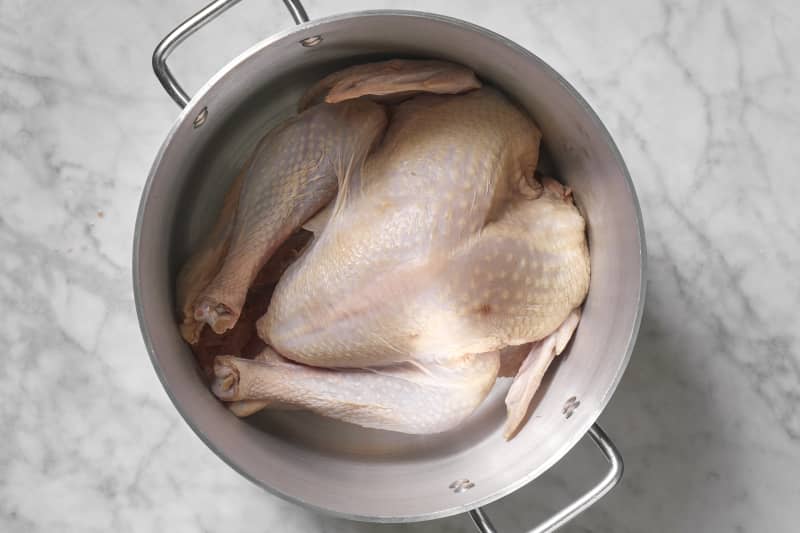
In life, we are occasionally presented with some tough choices. Choices that have a clear right and a clear wrong — but those options can start to get a little fuzzy if you look at them for too long. Yes, under certain circumstances, with a certain amount of stress and a certain amount of not-very-logical thinking, that wrong choice can start to look very (very) right.
For instance, your turkey is frozen solid. And you’d really like to get it un-frozen in time to make that highly impressive recipe you tore out of the magazine on your friend’s coffee table. What do you do? Can you leave a turkey out to thaw overnight, perhaps? The short answer is no. Here are the wrong ways to thaw your bird and the safest way to thaw a turkey.
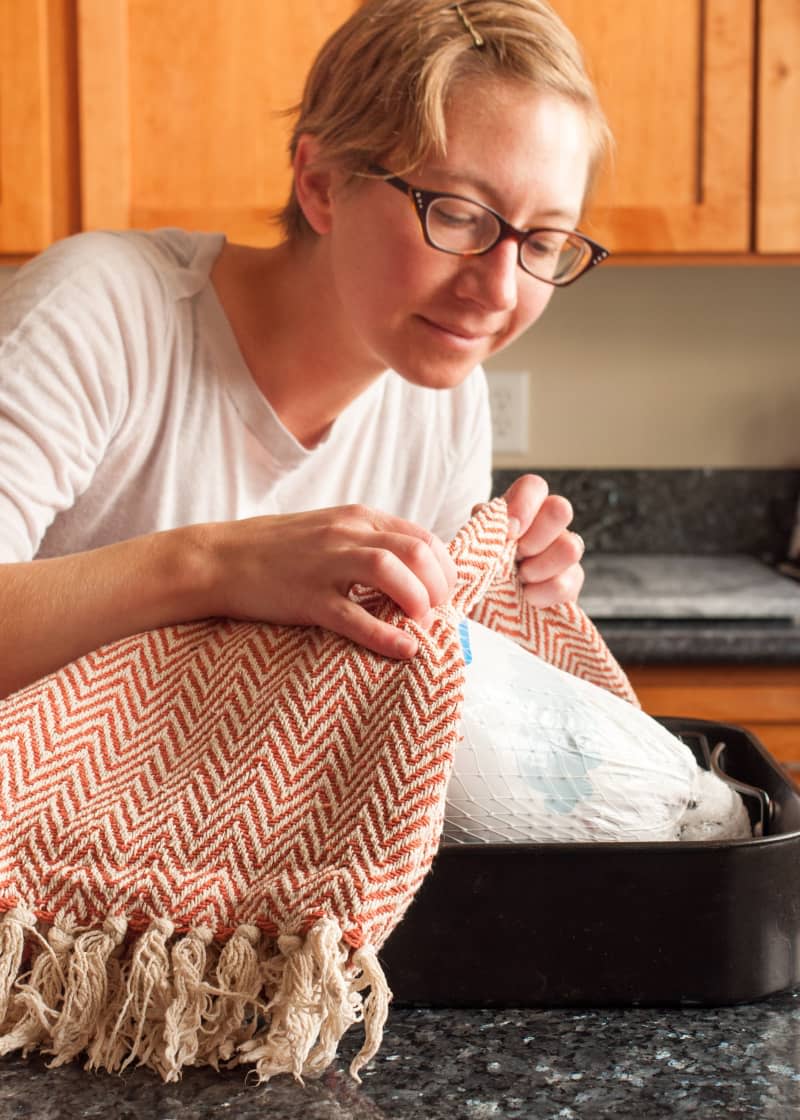
3 Wrong Ways to Thaw a Turkey
1. Do not thaw your turkey on the counter.
I know what you’re thinking: It’s a big turkey. It’s frozen solid. It will be totally fine chillaxing on the counter overnight. Didn’t Grandma do that? It’s fine. But no, it’s not fine. Not even tucked in with your favorite blanket and a hot water bottle.
While you might sometimes get away with doing this for your pork chops or a few chicken breasts that you’re cooking for dinner (although, don’t tell the USDA), large meats like turkeys and roasts take much longer to thaw. Once the outside of the turkey thaws to above 40°F, it enters the “danger zone,” and any bacteria present in the meat will start to multiply rapidly. Some bacteria, such as Staphylococcus aureus, produce a toxin that can make you ill. Although most of the bacteria will be killed during cooking, the “staph” toxin is heat-resistant and will survive the heat of the oven.
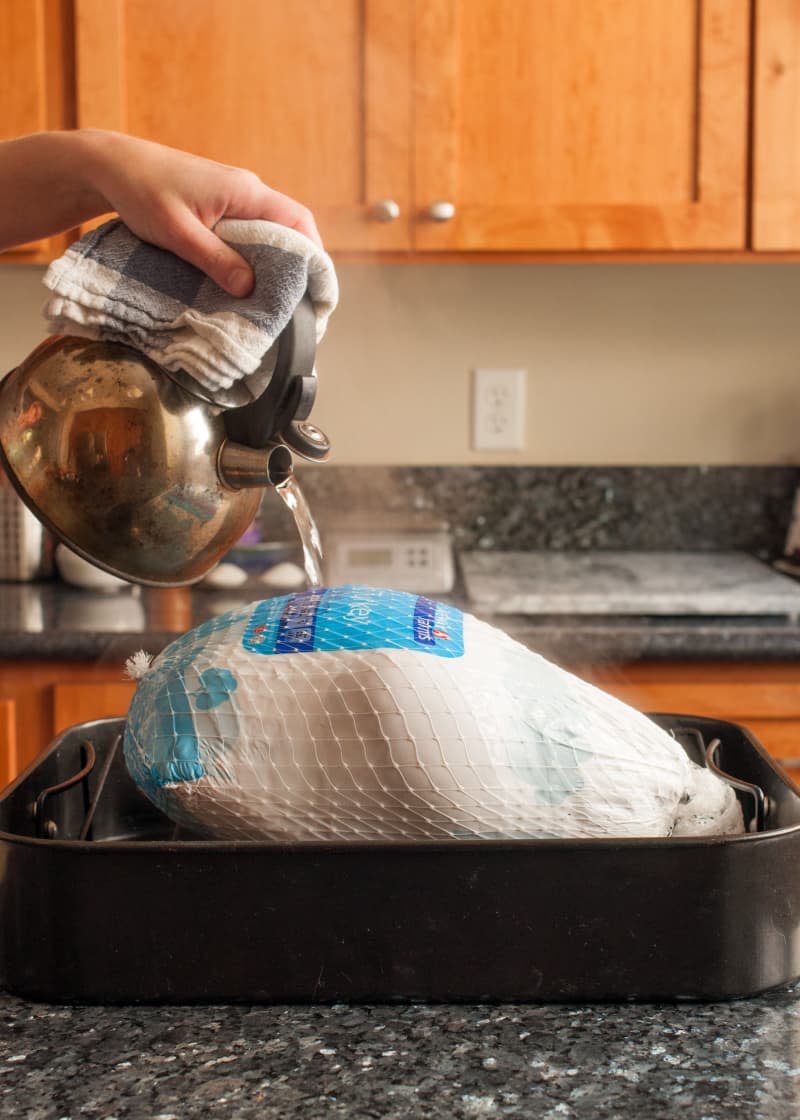
2. Do not give your turkey a hot bath.
Okay, so if thawing on the counter is out, what about dunking the turkey in hot water to speed things up? Sorry, amigo — while a hot bath does indeed soothe many woes, it’s not the best solution for your frozen turkey situation.
Warm or hot water will push the turkey into the temperature danger zone even faster than leaving it on the counter. Bacteria also multiply more quickly at warmer temperatures (and create more toxins), so you have an even smaller window of time to work with. And with something as large as a turkey, that window just isn’t big enough.
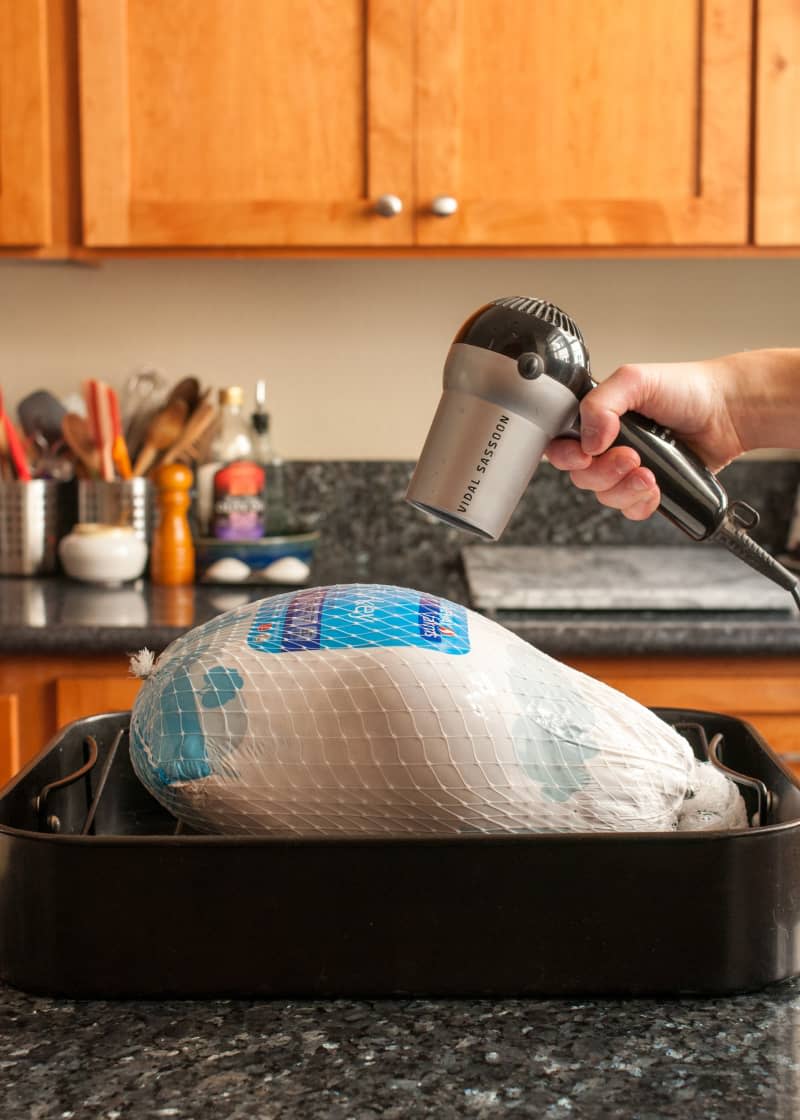
3. Do not treat your turkey to a blow dry.
If you’re thinking a hot blow dryer will make all your problems go away, I’m gonna stop you right there. What works in the movies will not give you or your family a happy ending this holiday season.
It all comes back to that “danger zone.” Even with something as hot as a blow dryer — and even if you are able to thaw the inside and the outside at the same time — it’s very hard to get that turkey thawed within a safe period. Plus, you’ll probably blow a fuse in the process.
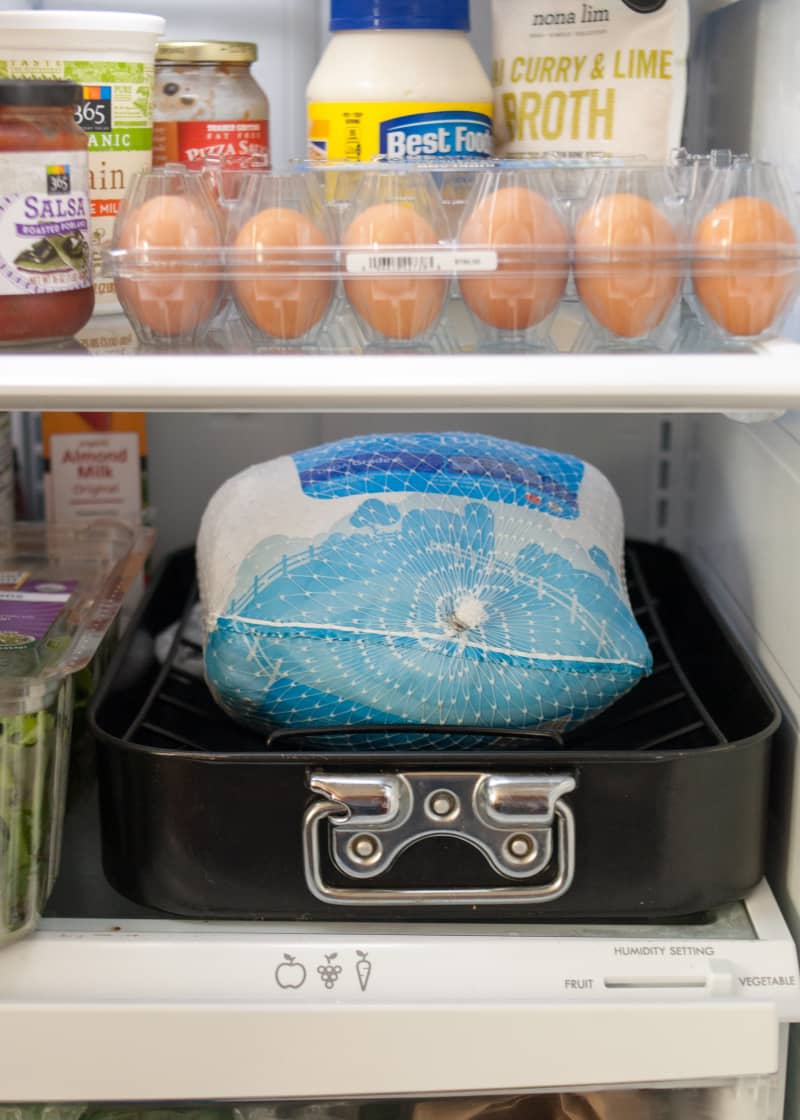
The Best Way to Safely Thaw a Turkey
Thawing your turkey is one time when you just don’t want to mess around or take shortcuts. Food poisoning during the holidays is something no one wants to experience. Choose one of these options instead.
Refrigerator Thaw
It takes a few days in the fridge to thaw a turkey — about 24 hours for every five pounds of turkey — so plan ahead for this one. On the upside, the is the safest way to thaw your turkey. Once thawed, you can keep the turkey in the fridge for another two days before cooking it.
Cold Water Thaw
If you need your turkey thawed a little more quickly, you can submerge it in water, but there are two big caveats: the water must be cold, and you need to change the water every 30 minutes. This ensures that the turkey stays below the danger zone during thawing. Estimate about 30 minutes for every pound of turkey.
Read More: How To Safely Thaw a Turkey
No Time to Thaw the Turkey?
If you don’t have time for either of those thawing methods, then you have one last resort: cook your turkey frozen. Yes, you can actually roast a completely frozen turkey in your oven (just don’t deep-fry or grill it), and this makes a darn good turkey in time for Thanksgiving dinner — crispy skin and all. It’s also a much safer option than leaving it on the counter or any other shortcuts you might be tempted to try.
Read More: How To Cook a Frozen Turkey

